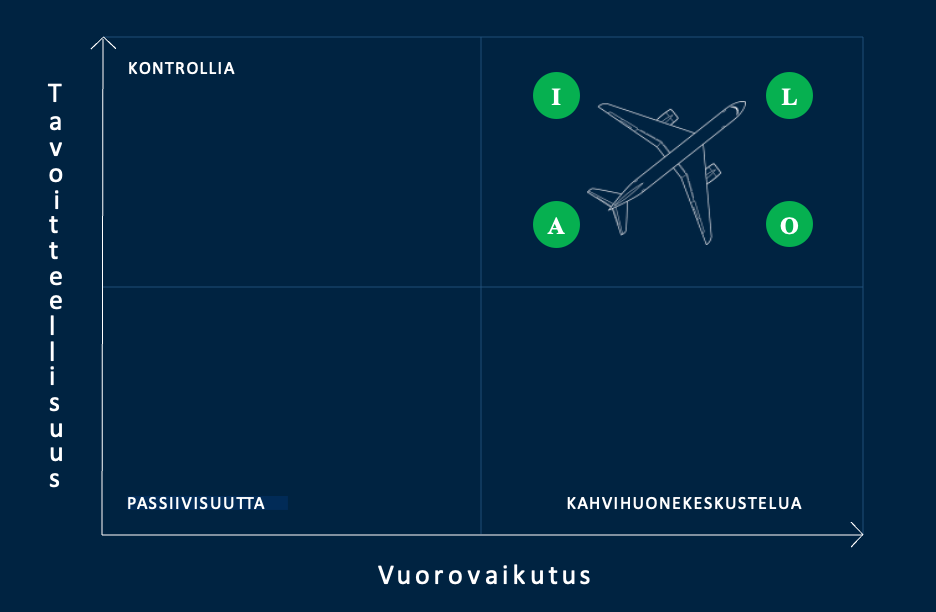Goal-oriented interaction – what makes successful leadership?
- Lars Mula

- Sep 8
- 2 min read
Imagine a meeting. A team gathers to discuss an important project, but the discussion starts to ramble. Some of the group chats among themselves, others remain silent. In the end, no one really knows what was agreed upon. This is interaction – but not goal-oriented.
Another situation: the same team meets again. The leader opens the discussion with a clear question, makes sure everyone has a voice, and finally brings together the decisions. Now the interaction is goal-oriented – and its impact is visible in both team engagement and results.
What does goal-oriented interaction mean?
The Deep Leadership® model developed by Deep Lead is based on research and over two decades of practical experience. At its core is the idea that interaction is not random , but should be goal-oriented.

The diagram shows the interaction through two dimensions:
Goal-orientedness : how clearly the discussion leads towards the goal
Interaction : how active, participatory and meaningful the interaction is
When these are combined, four different approaches emerge, only one of which leads to long-term success.
Passivity and coffee room conversation – when interaction leads nowhere
In the bottom left corner is passivity: there is no interaction and no goals to be addressed. This can be seen, for example, in a leader who does not give feedback or a team where people avoid difficult issues. The result is frustration and ambiguity.
Bottom right is a coffee room conversation. There is interaction – it can even be lively – but it remains superficial. A comfortable atmosphere does not lead to decisions or change. In this case, the potential of the team remains unused.
Control – goal-oriented but one-way
In the upper left corner is control. The leader drives things forward with determination, but the conversation is one-way. People don’t feel heard, and over time, engagement suffers. Control can achieve short-term results, but in the long run it eats away at motivation and trust.
Goal-oriented interaction – a productive and humane way to lead
The top right is the space that Deep Leadership® aims for: goal-oriented interaction . It combines direction and dialogue. The leader ensures that the conversation is meaningful and leads towards goals, but at the same time he or she genuinely listens and pays attention to people.
This is achieved through the four elements of Deep Leadership®:
Trust (L) – openness and psychological safety enable bold discussion.
Enthusiasm (E) – the leader makes people see the meaning of the work.
Learning (L) – the team is encouraged to look for new solutions.
Appreciation (A) – everyone is seen and supported in their own way.
When these are realized, an atmosphere is created in which people dare to bring forward their ideas, commit to goals, and feel that their work is meaningful.
Why is this crucial?
In today's workplace, success is no longer based solely on resources or processes, but on the ability to build goal-oriented interactions . It is the factor that determines whether a team remains committed and whether added value is created from collaboration.
👉 Deep Lead Academy offers digital coaching programs that help make purposeful interaction a practical tool, not just a beautiful idea.





Comments